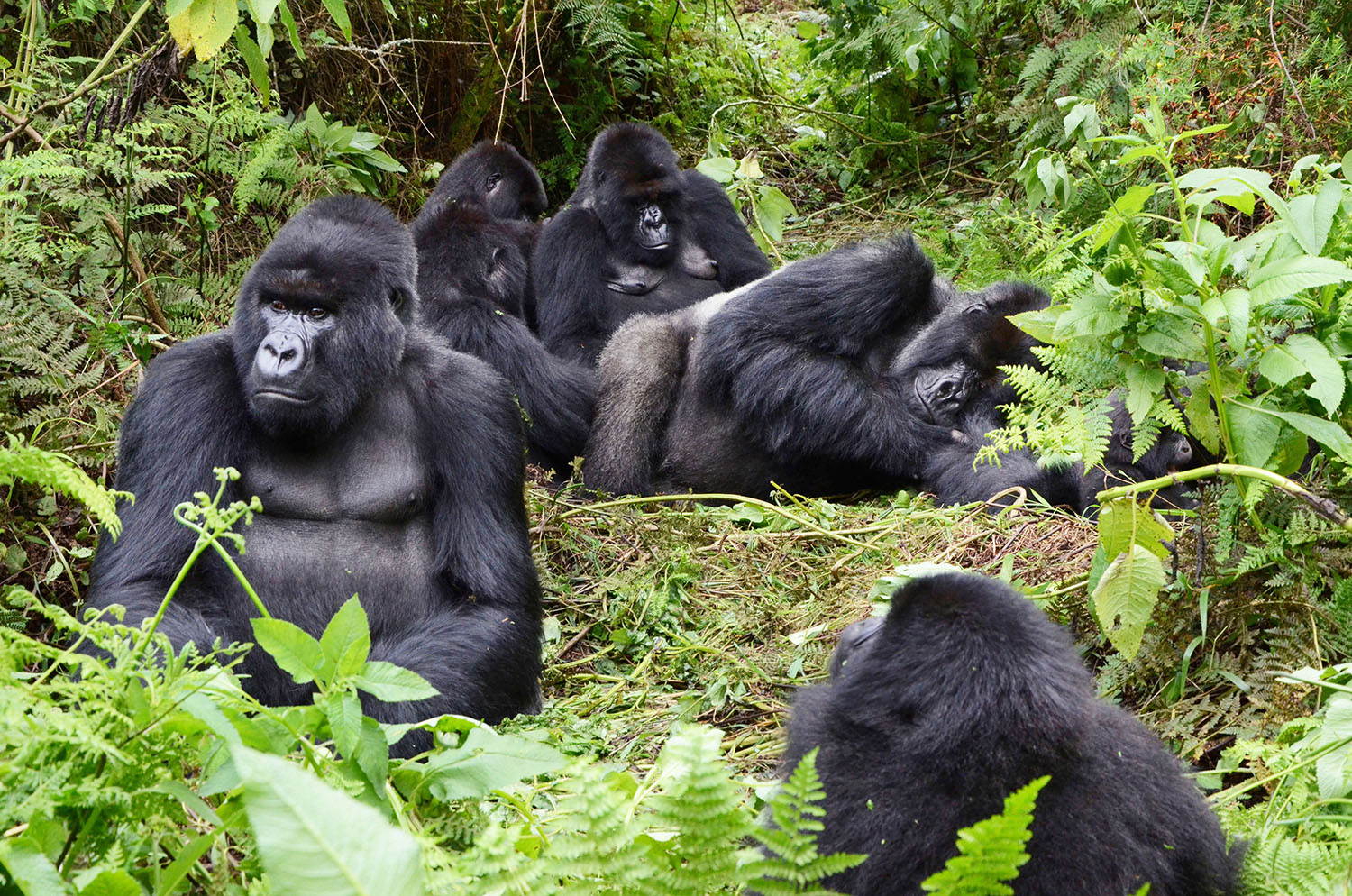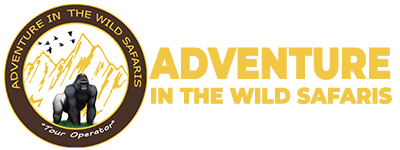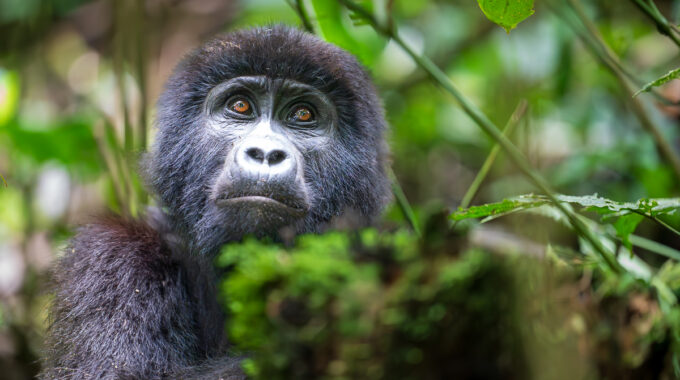Volcanoes national park, Bwindi gorilla park, and Mgahinga Gorilla National Park—Community Involvement in Park Conservation…
Gorilla Families in the Park: What to Know
Gorilla Families in the Park: What to Know

Gorilla trekking in Rwanda and Uganda is a once-in-a-lifetime experience, and understanding the different gorilla families in the park enhances the appreciation and value of the journey. Each gorilla family has its own dynamics, personalities, and stories. Whether you’re trekking through the misty forests of Volcanoes National Park in Rwanda or the thick jungles of Bwindi Impenetrable Forest and Mgahinga Gorilla National Park in Uganda, knowing which family you’re likely to visit helps set expectations and build anticipation.
This guide from Gorilla Rwanda Safaris introduces you to the various habituated gorilla families, how they are organized, the rules of assignment, and what makes each group unique.
1. What Are Gorilla Families?
A gorilla family or group consists of a dominant silverback male, several females, juveniles, and infants. In some cases, families may have multiple silverbacks or blackbacks (younger males), but leadership typically lies with the most dominant silverback.
Gorilla families are tightly knit, social units with strong bonds maintained through grooming, play, vocal communication, and protective behavior. Tourists can only visit habituated families—groups that have undergone a careful process to get accustomed to human presence without altering their natural behavior.
2. Gorilla Families in Volcanoes National Park—Rwanda
Volcanoes National Park is home to around 12 habituated gorilla families that are available for tourism. The park also houses other groups dedicated to research and conservation.
a. Susa A Family (Susa Group)
- The largest and most famous family
- Originally studied by Dian Fossey
- Known for twins Byishimo and Impano
- Located high in the mountains (challenging trek)
b. Karisimbi Family (Susa B)
- A splinter group from the Susa A family
- Inhabits the slopes of Mount Karisimbi
- Trekking can be strenuous but rewarding
c. Amahoro Family
- Known for its peaceful demeanor (Amahoro means “peace”)
- Led by a gentle silverback named Ubumwe
- Often found on Mount Bisoke
d. Umubano Family
- Split from Amahoro due to leadership competition
- Led by Charles, a young and assertive silverback
- Relatively easier trekking terrain
e. Sabyinyo Family
- One of the easiest groups to trek
- Led by Guhonda, the largest silverback in the park
- Often located near the park headquarters
f. Agashya Family (Group 13)
- Named after a silverback who took over leadership
- Frequently changes location
- Agile and mobile group
g. Kwitonda Family
- Migrated from the Democratic Republic of Congo
- Known for being elusive and covering long distances
- Often found on Mount Muhabura
h. Hirwa Family
- Formed from members of different groups
- Name means “lucky,” due to its rare formation
- Occasionally crosses into Uganda’s Mgahinga Park
i. Bwenge Family
- Known for several infants and young gorillas
- Was featured in the film “Gorillas in the Mist”
j. Ugenda Family
- The name means “mobile” due to their constant movement
- Habituated in the Karisimbi area
k. Muhoza Family
- A relatively new group
- Frequently found around Mount Sabyinyo
l. Pablo Family
- Named after a long-standing silverback leader
- One of the largest families in the region
Related Blog: Overview of Volcanoes National Park
3. Gorilla Families in Uganda
Uganda is home to half of the world’s remaining mountain gorilla population. These gorillas reside in:
- Bwindi Impenetrable National Park
- Mgahinga Gorilla National Park
There are over 20 habituated families available for trekking in Bwindi,, while Mgahinga has only one habituated gorilla family.
a. Families in Bwindi (Four Sectors)
i. Buhoma Sector
- Mubare: The first habituated group in Uganda
- Habinyanja: Famous for its large numbers
- Rushegura: Easy to trek and great for beginners
ii. Ruhija Sector
- Bitukura: Known for calm behavior
- Oruzogo: Large group, very playful juveniles
- Kyaguriro: Used for research purposes but sometimes available to tourists
iii. Rushaga Sector
- Nshongi: Once the largest group
- Mishaya: Aggressive silverback leadership
- Bweza, Bikingi, Kahungye, and Busingye: All accessible and offer rich trekking experiences
iv. Nkuringo Sector
- Nkuringo Family: Toughest trek but rewarding views
- Christmas Family: Small but close-knit
- Bushaho Family: Newer group, habituated recently
b. Mgahinga Gorilla National Park
There is one habituated group called the Nyakagezi Family:
- Consists of several silverbacks coexisting peacefully
- Often crosses into Rwanda but largely stable
- Easiest trek among Ugandan options
Related Blog: Gorilla Trekking in Volcanoes National Park vs Bwindi
4. Gorilla Habituation Experience
In Uganda’s Rushaga sector, visitors can participate in the unique gorilla habituation experience, spending up to four hours with a semi-habituated group. This immersive activity is ideal for photographers, researchers, and enthusiasts.
- More time in the wild
- Learn about gorilla behavior
- Led by trackers and researchers
Related Blog: Photography Tips for Capturing Gorillas in the Wild
5. How Are Tourists Assigned to Gorilla Families?
The park authorities, in collaboration with licensed tour operators like Gorilla Rwanda Safaris, assign tourists to specific families based on:
- Fitness level (some families require strenuous hikes)
- Age and health conditions
- Group size
- Preference (if available)
- Availability and permit quotas
Each gorilla group is limited to 8 visitors per day to minimize stress and ensure sustainability.
6. Permit Booking and Importance
Knowing the gorilla family you’re likely to visit depends on timely booking of permits. Rwanda charges $1,500 per permit, while Uganda charges $800. Advance booking ensures availability in your preferred sector and group.
Related Blog: How to Book Gorilla Permits for Rwanda and Uganda
7. Ethical Considerations and Conservation
Gorilla trekking directly contributes to the conservation of these majestic animals. With your permit fee:
- Rangers are employed to protect the gorillas
- Communities receive income for healthcare and education
- Poaching is deterred through awareness and economic alternatives
Organizations like the Dian Fossey Gorilla Fund and the International Gorilla Conservation Programme continue to study and protect gorilla families in the wild.
More Web Resources:
- Rwanda Development Board – Gorilla Groups
- Uganda Wildlife Authority – Gorilla Families
- Dian Fossey Gorilla Fund
8. Gorilla Family Etiquette During Treks
- Maintain a 7-meter distance from gorillas
- Do not eat or drink in front of them
- Avoid sudden movements or loud noises
- Wear masks to prevent disease transmission
- No flash photography
- Leave no trace behind
9. Which Family is Right for You?
If you’re unsure which group to request or prefer, here’s a quick guide:
| Experience Level | Recommended Family | Country |
|---|---|---|
| First-time visitors | Sabyinyo, Rushegura, Nyakagezi | Rwanda/Uganda |
| Photographers | Oruzogo, Nshongi, Susa A | Rwanda/Uganda |
| Fit hikers | Karisimbi, Nkuringo | Rwanda/Uganda |
| Families with kids | Buhoma or Rushaga groups | Uganda |
| Cultural enthusiasts | Visit Hirwa or Sabyinyo with cultural village tour | Rwanda |
Related Blog: Fitness Requirements for Gorilla Trekking in Rwanda and Uganda
10. Final Thoughts
Each gorilla family in Rwanda and Uganda tells a story—of resilience, adaptation, and the enduring strength of nature. Choosing which family to visit is not just about convenience, but also about aligning with your trekking ability, expectations, and interests.
At Gorilla Rwanda Safaris, we help travelers connect with these extraordinary primates through tailored experiences that emphasize conservation, comfort, and unforgettable memories. Whether you’re intrigued by the legendary Susa Group or drawn to the accessible Rushegura family, you’re guaranteed a transformative journey.
Related Blogs
- How to Book Gorilla Permits for Rwanda and Uganda
- Packing Guide for Gorilla Trekking in Uganda and Rwanda
- Fitness Requirements for Gorilla Trekking in Rwanda and Uganda
- Gorilla Trekking in Volcanoes National Park vs Bwindi
- Photography Tips for Capturing Gorillas in the Wild



